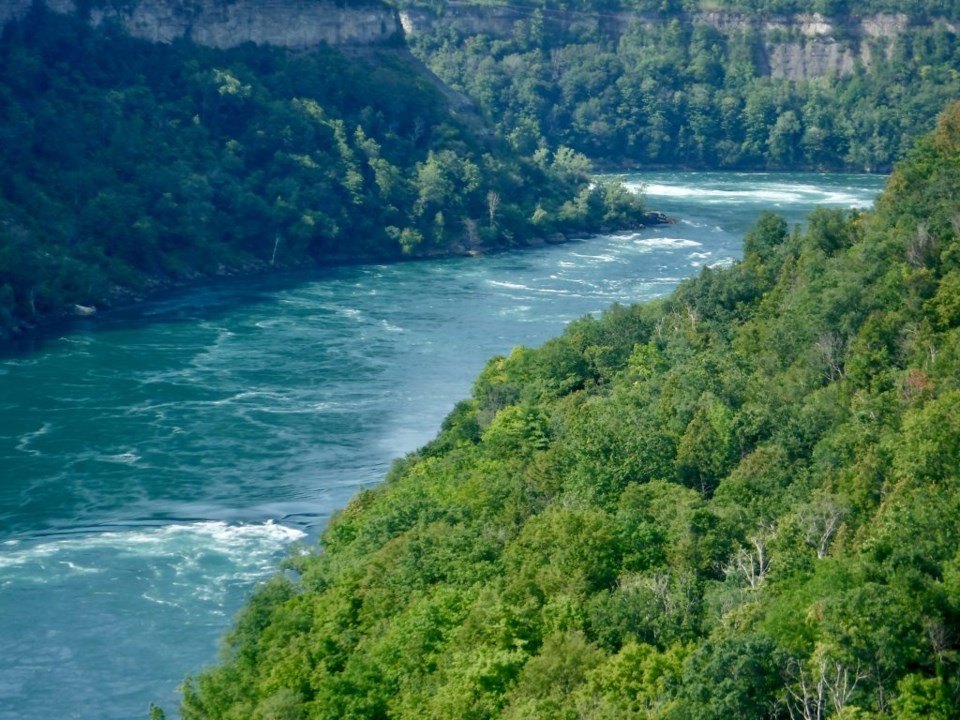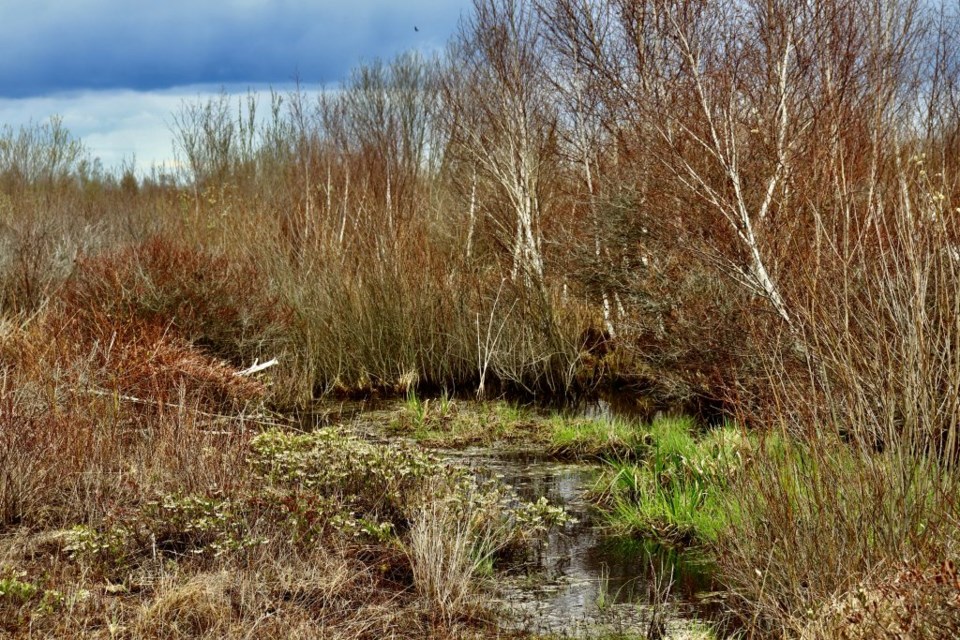
I get asked a lot of questions as a hiking tour guide and outdoor educator. It’s probably my favourite aspect of the job. It’s never annoying, and there is no such thing as a dumb question. Rather, I am happy to see a sea of curious minds who are intrigued by their natural surroundings. It would be far more concerning if people didn’t ask any questions at all.
This week, I will rattle off my most frequently asked questions when I’m outdoors in Niagara. Perhaps some of these questions have been on your mind as a local, and this will assist you in your quest for curiosity.
First of all, why is the Niagara River that colour? Typically, turquoise waters come to mind as gentle waves lapping up against a distant Caribbean island. Our Niagara River certainly rivals this dazzling colour of blueish green, and we can thank limestone for that.
Limestone is a type of rock formation that has nothing to do with limes. It is composed of crystallized calcium carbonate, which although rock-hard, gives off a type of chalky mineral dust when water erodes its way by. With over 60 tonnes of dissolved minerals coming over the brink of Niagara Falls every minute, you can imagine the power of erosion pulling the minerals into the waterway. All of this action allows the water to carry this sediment with a profound, eye-catching colour we come to know in town. It has almost nothing to do with algae or pollution.
While you’re sitting at your favourite Niagara River bench or park, you may also be wondering, hey, what’s that buzzing sound? The sustained rattling in the sky becomes ambient noise after a while, simply a nostalgic backtrack to the dog days of summer.
This is created by cicadas, most likely the species known as the dog-day cicada. We’re talking about a thumb-sized insect with a propensity for noise making, but only by the males. This is their brief but important job at the end of summer, to call out incessantly and find a mate, and then perish. The mature cicadas barely even eat, as all of the feeding happened when they were nymphs underground, sucking on tree roots before they emerged and metamorphosed into their larger, colourful adult versions.
Cicadas hold an irreplaceable role in the food web, as birds, amphibians, and other insects feast on these innumerable and fascinating bugs. On that note, a cicada is a true bug. Prior to my biology studies, I and many people referred to all insects as bugs. True bugs are insects, but are actually a smaller grouping of creatures which are characterized by two sets of folding wings and a general appetite for plant life. This means that butterflies, ants, and beetles are technically not bugs, but are still insects.
To paint a classic NOTL scene, perhaps you’re hanging out by the Niagara River’s turquoise waters while listening to the gentle drone of cicadas. You’re having a barbecue and throwing a ball around (not at the same time, although that would be talented). Your ball goes flying into the bushes, and you’re about to reach in to retrieve it. But, wait — is that poison ivy? Or poison oak?
We’ve only got poison ivy here in NOTL. Poison oak, although remarkably similar in its classic three-leaved appearance and habitat preference, is found far away in the southern and Pacific states. Poison ivy is a native species which provides undergrowth habitat and food for some animals, and may also provide a red rash if you run your skin through it. However, not everybody is susceptible, and reactions are generally mild.
Lastly, I get a question, for which I have different answers. “Owen, what is your favourite personal hike here in Niagara?” That question is unfair! With so many options and seasons to choose from, I have narrowed it down to the Niagara Gorge and Wainfleet Bog. The former is a well-maintained but rugged hike which I would undeniably rank as “world class.” The latter is a slimy biological wonderland for those who aren’t afraid of mud, and want to avoid the crowds.
Keep asking questions about everything in life. That is how our species grows and learns, and with enough answered questions, we will then learn to appreciate and protect Niagara’s precious green spaces.
